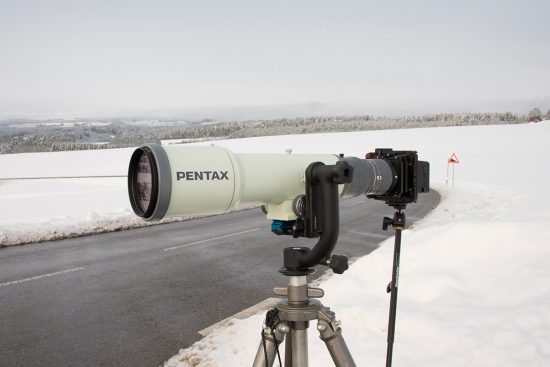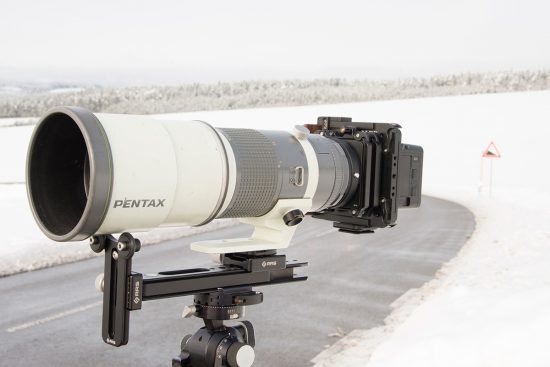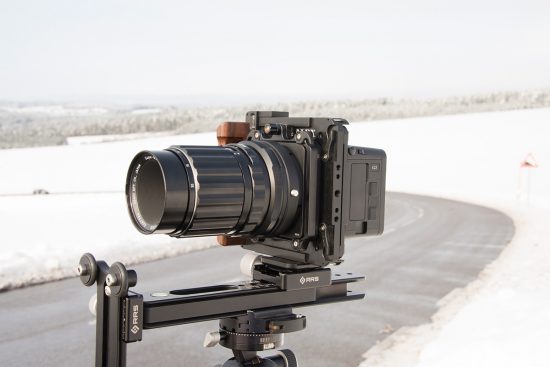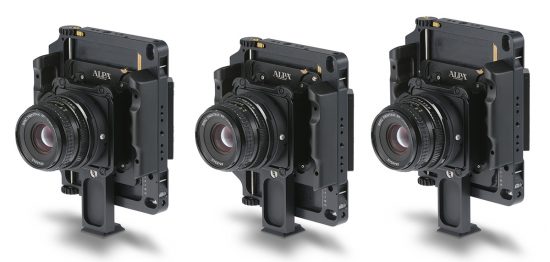


ALPA recently announced a new Pentax 67 lens module:
ALPA 12 MEETS PENTAX 67

Pentax 67 was one of the most popular camera systems in the classic medium format. The cameras, lenses and accessories of the series have been on the market since 1969. The focal lengths of the lenses with the additional names SMC (Super Multi Coating) and/or Takumar range from 35mm to 1000mm.
Introduced under the name Pentax 6X7, Pentax promised photographers an answer to almost every photographic challenge. In 1976, the manufacturer launched an improved Pentax 6×7 model with mirror lock up (MLU). From 1989 onwards, the manufacturer renamed the product to 67. In 1999, the company introduced the latest series under the name Pentax 67 II. Production was finally discontinued in September 2009.
Shift up to 15 mm
All models of the series continue to impress with their image quality and workmanship. The body of the camera is constructed like a “highly scaled” 35 mm camera, almost indestructible and therefore not lightweight. Other features include the relatively loud shutter and the 6×7 aspect ratio, and despite these limitations, the system is still in high demand. A popularity that is unaffected by the vibrations associated with mirror impact and shutter release. If you want to avoid the phenomenon by the way, you should opt for a Pentax 67 series body with mirror release (referred to as MLU or Mirror Lock Up).
Its features make the Pentax 67 series of cameras and lenses an excellent tool for landscape pictures and portraits, especially in conjunction with ALPA. For portraits in particular, there is no need for a mirror release. In the core segment of landscape and architecture, ALPA / Rodenstock Rodagon HR lenses fully demonstrate their advantages over the competition. A combination of these lenses and a Pentax-67 body is therefore a good choice.
One of the strengths of Pentax 67/6×7 lenses is the possibility to shift. The image circle of all lenses with this designation is at least 90 mm. This circumstance allows a displacement of 15mm for the large sensors.
Long focal lengths for medium format
Especially those who want to work in medium format with long focal lengths of 400mm or more will hardly be able to do without the Pentax 67 system, even eight years after the end of production. For ALPA photographers, these long lenses were not previously used in conjunction with the ALPA 12 system. With the Pentax 67 lens module, ALPA is now building a bridge to the entire medium format camera system ALPA 12 and modern digital backs. This means that the valuable lenses will retain their value beyond the next few years, as they remain compatible with the latest camera technology. In addition, new creative applications for ALPA photographers are emerging.
Performance with modern backs
Photographer Jakob Bosch has carried out a field test on behalf of ALPA near his home in southern Germany. He combined his ALPA 12 MAX and ALPA 12 STC with the modern Phase One IQ3 100 MP digital back and Pentax 67 lenses in different focal lengths.
“Despite the very short test, I am very satisfied with the results,”says Bosch. “The gain through the use of telephoto focal lengths higher than the ALPA Schneider lens is considerable. Especially the Pentax 6×7 400 mm lens with ED glass, already an excellent lens on the 67 mm camera, harmonizes perfectly with the IQ3, and not only because telephoto is finally possible. The Pentax 6×7 macro lens also makes the Alpa/Pentax 67 combination even more universal.”
Atmosphere, mood and pixel-accurate focusing
“The possibilities of a high-quality digital back can now also be exploited to a large extent by the Pentax 67 lenses with the aid of the lens module. Of course, this does not achieve the resolution of a high-end back like the Phase One IQ3 100 MP or the H6D,”says Jakob Bosch. “But if we move away from pure mathematics and assume that an image lives from the atmosphere or mood and not from the number of pixels alone, then these lenses provide excellent results.”
The life-view function of modern digital backs in combination with the ALPA Pentax 67 lens module makes it possible today to focus Pentax 67 lenses with long focal lengths pixel-accurate.
Bosch has meanwhile integrated the lens module and the Pentax 67 lenses into his everyday life as an ALPA photographer – apart from the somewhat bulky 800 mm lens. Preservation of value for these older lenses is perhaps the most important aspect of the lens module,” he says. “ALPA is also reviving the tele segment range with this product. Those who previously worked with a manual ALPA could not use their telephoto lenses before. I know a handful of photographers who work with Pentax 67 and about twice as many who have lenses of this type but don’t use them anymore.”
Many combinations possible
The ALPA Pentax 67 lens module is available now. The module is of SB 34 type so there are a variety of options for configuration with ALPA 12 cameras. With a standard ALPA body a combination of 34 mm in rigid and/or tilt/shift adapters is feasible. On an ALPA 12 FPS a 17 mm tilt/shift or rigid adapter will do the trick. For detailed information, please contact ALPA of Switzerland directly. We will be happy to help you.




